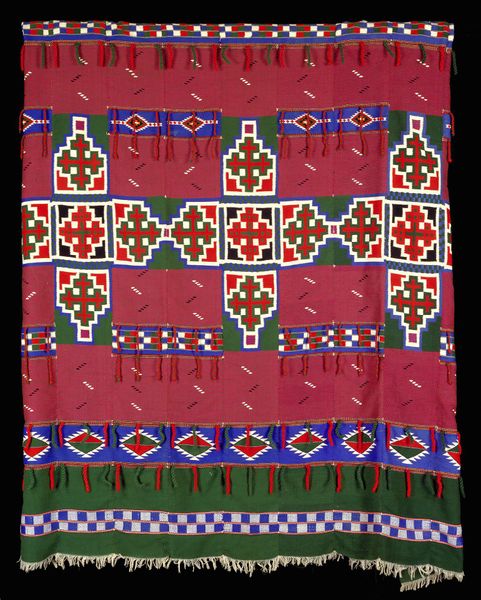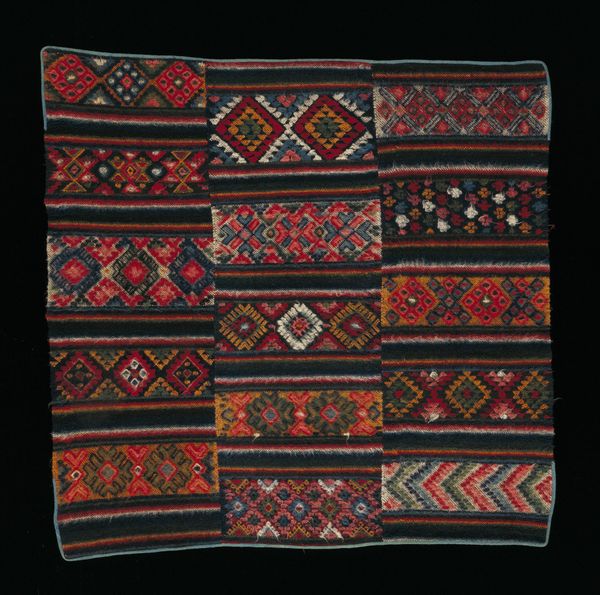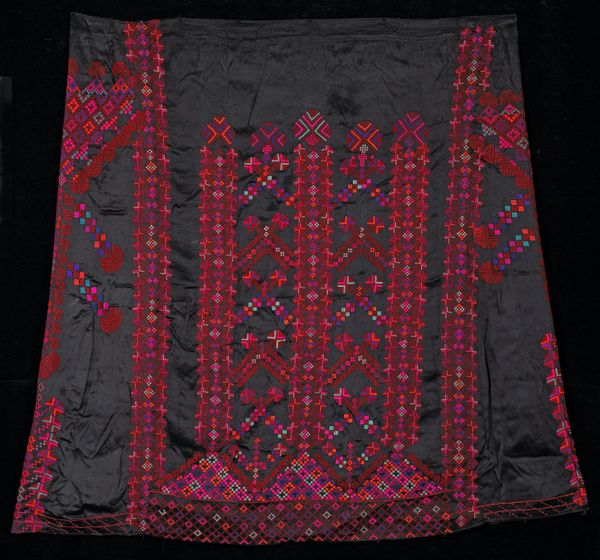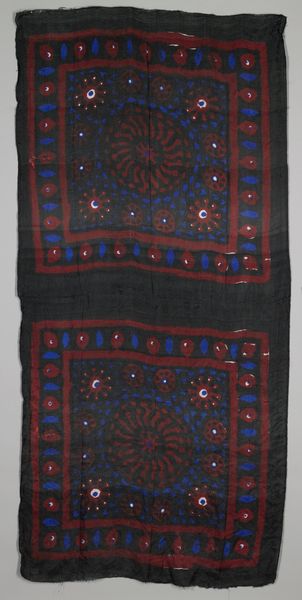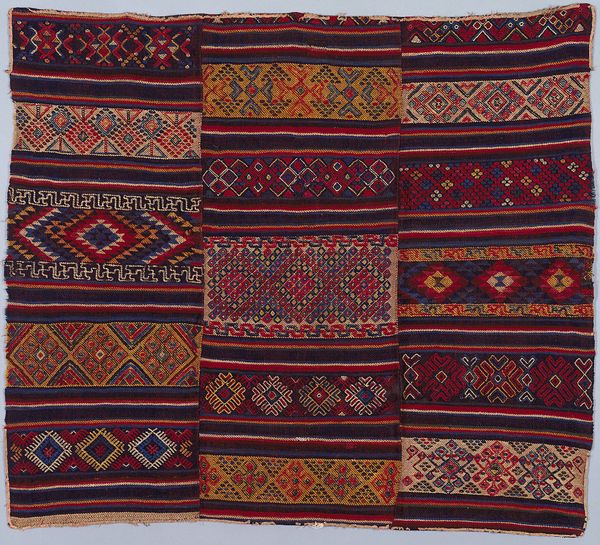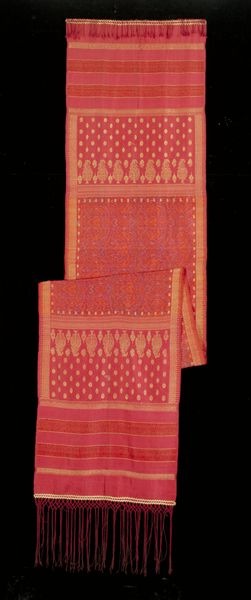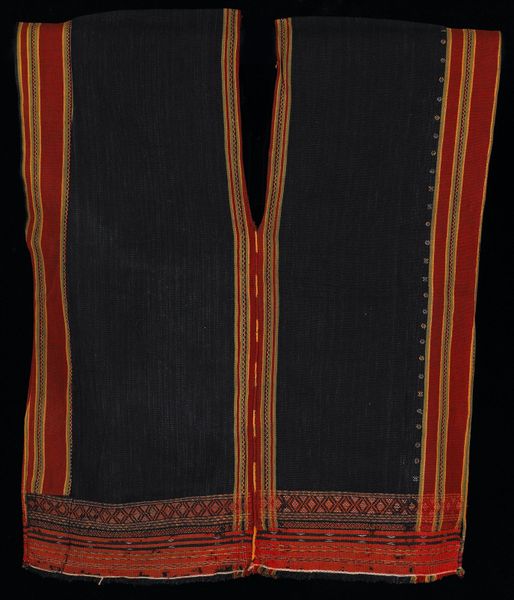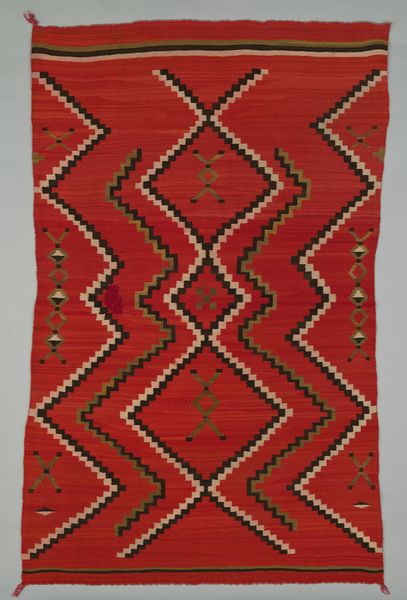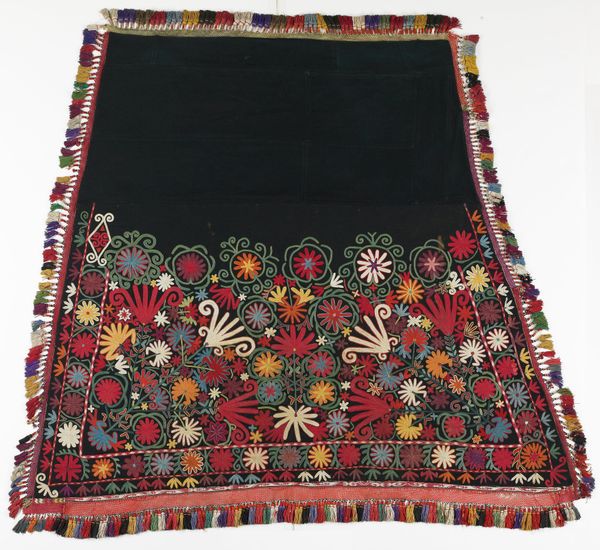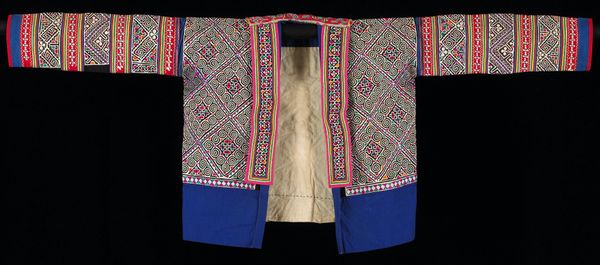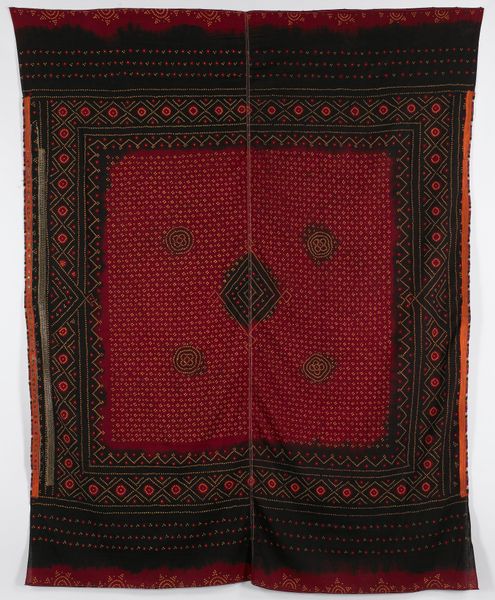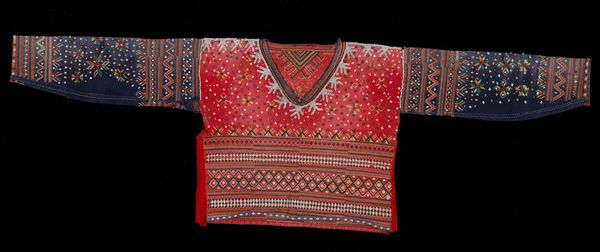
fibre-art, weaving, textile, wool
#
natural stone pattern
#
fibre-art
#
weaving
#
textile
#
wool
#
fashion and textile design
#
geometric pattern
#
pattern design
#
repetition of pattern
#
regular pattern
#
pattern repetition
#
textile design
#
imprinted textile
#
layered pattern
Dimensions: 154 1/2 x 45 1/2 in. (392.43 x 115.57 cm) (including fringe)
Copyright: Public Domain
Curator: Well, this certainly catches the eye. Visually, it is arresting. Editor: Agreed. At first glance, it has an unexpectedly somber mood, doesn't it? Despite all that intense geometric pattern work. Curator: It might be the dark wool providing that stark backdrop for all that geometry. Let me tell you about this textile: It’s an anonymous shawl, estimated to have been made around 1975, and it currently resides here at the Minneapolis Institute of Art. What draws you to it specifically? Editor: I'm struck by the tension between individual expression and communal identity. The maker of this shawl remains anonymous, but it's steeped in cultural memory, I’d say. It echoes folk patterns and craft traditions from various cultures—global South, maybe? Something in the vibrant palettes calls to my mind the textiles of Latin America. It could almost be a coded form of communication. Curator: Absolutely. We see these echoed patterns used for centuries. You've pinpointed that these aren’t just designs, they function as symbolic reservoirs passed through generations, and adapted and innovated throughout their history. Notice how those shapes, chevrons, diamonds, and rosettes create this overall structured narrative on the dark field. The motifs suggest connection with something more ancient, more shared, something intrinsically human and deep seated in history. Editor: Which begs the question of its intended audience and purpose. Was it simply meant to adorn the body? Or perhaps worn in ceremonial use. Was it for a market? How did its imagery communicate social status or perhaps group affiliation within its local, immediate sphere, but also maybe more expansively. Curator: Context can give meaning. I wonder who will inherit such knowledge in our own society. Without instruction, we are left guessing. Editor: Precisely. These aren’t meaningless shapes; the artisan chose specific elements to project and repeat with incredible skill. A question now lies with museums. Is it appropriate that a single textile represents such deep lineage and collective craft practice? Curator: Museums are themselves powerful curators of value and cultural representation. As long as objects are presented to encourage deeper inquiry and cultural awareness and openness, they serve a vital role in sparking public discourse. Editor: A textile like this reminds me that even something seemingly simple, like a shawl, is actually a profound artifact that contains worlds within its interwoven threads.
Comments
No comments
Be the first to comment and join the conversation on the ultimate creative platform.
